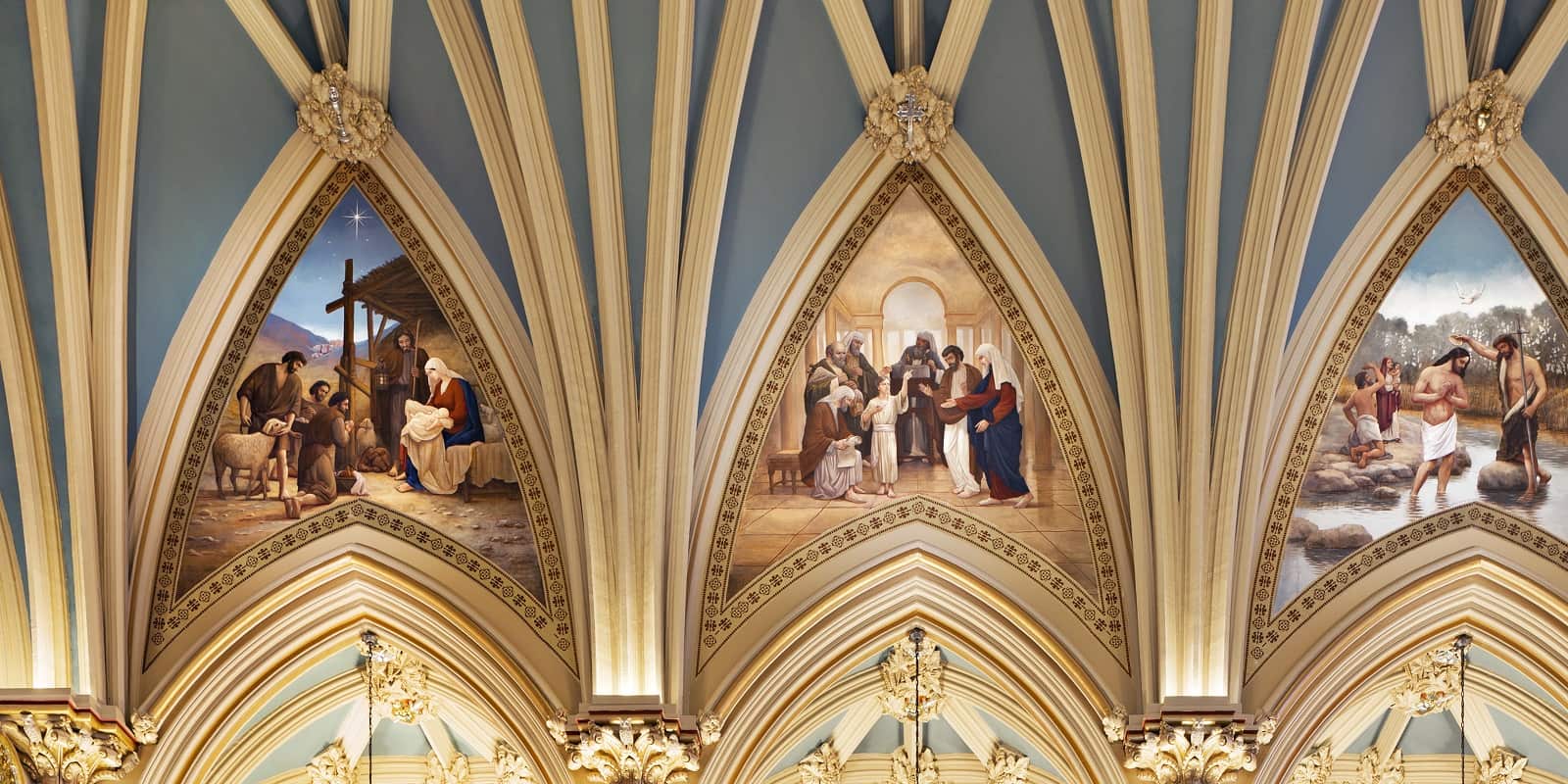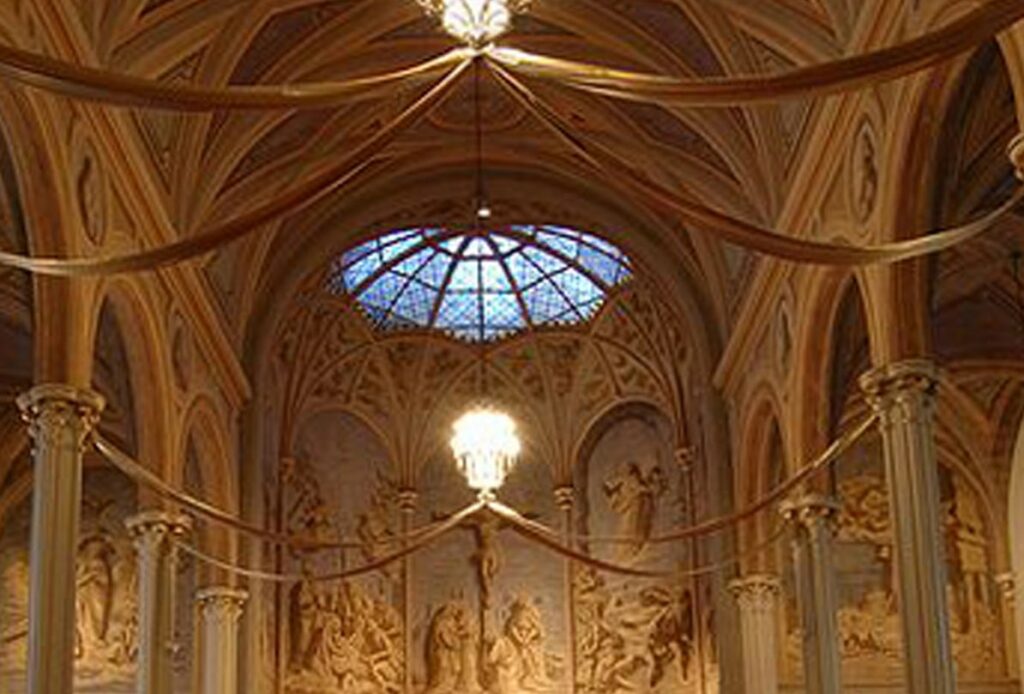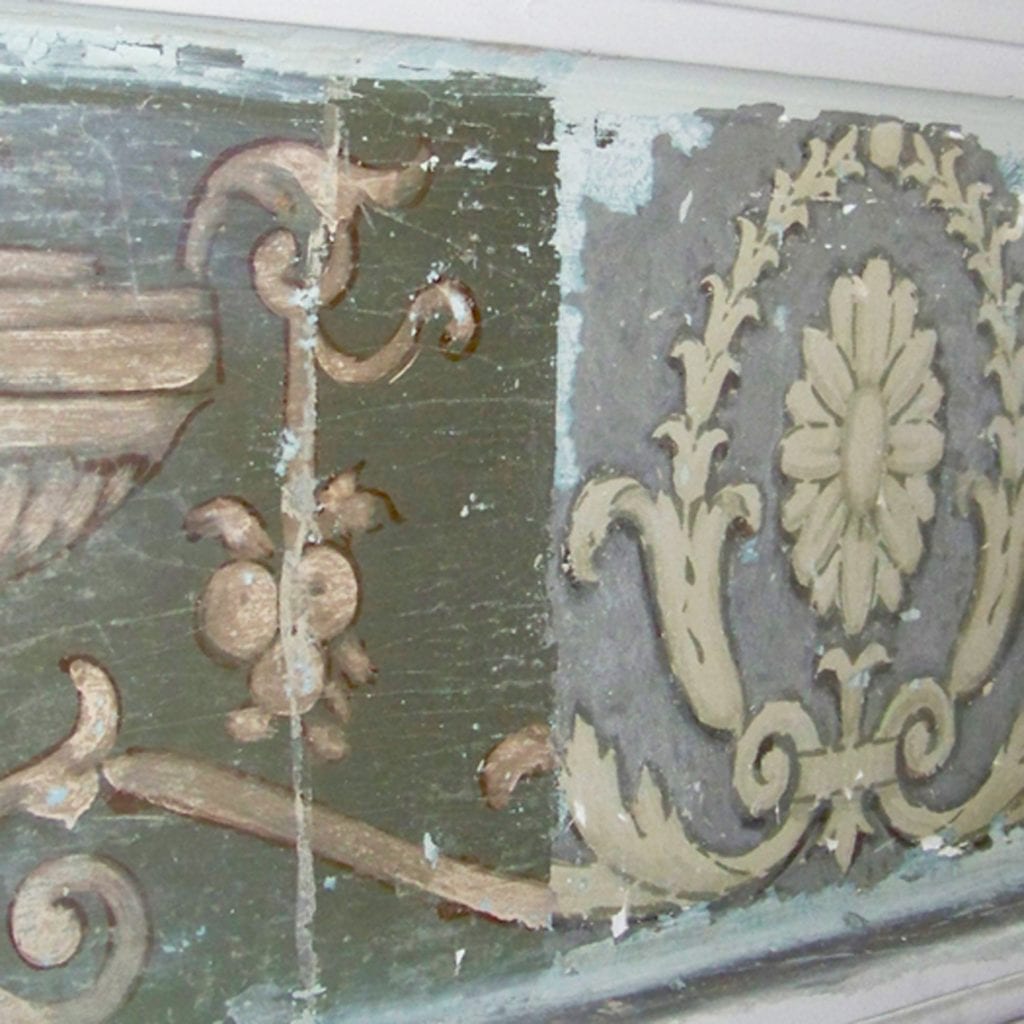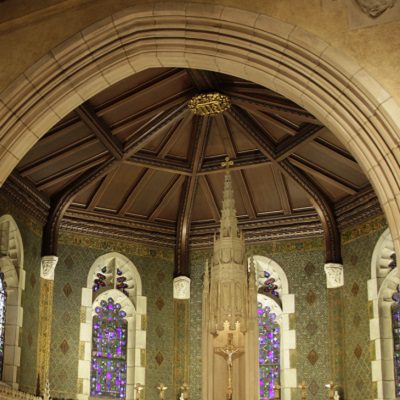The Cathedral of Saint Patrick was completed in 1879 but its original decoration had been painted over and lost 1960’s. When Bishop Cote invited us to create a new ecclesiastic decorative scheme for the Cathedral of St. Patrick, we decided to start with a simple paint survey. Knowing that the church was designed by James Murphy, brother-in-law to Patrick Keely, we knew the original ecclesiastical decoration was our best inspiration and we soon found ourselves enthralled in a full historical investigation. With an historical paint investigation, what we try to do is link the past to the present. When we are tasked with jobs similar to what we did at the Cathedral we look at the past in several ways as a means to ensure historical accuracy. Our initial starting point is through historic paint exposures. Using various chemical and mechanical methods, we peel away the layers of the paint in an attempt to bring forth any original colors or decorative schemes we can.
A simple paint investigation can tell us so much about the decoration an interior originally had. In this case, we were able to identify fragments of the original color and decorative motifs originally adorning the walls of the Cathedral. With this information, we can comb through old photographs, construction plans and other historic renderings to identify a more complete image of the original decoration and determine where to continue our investigations.
Through historic photographs, we were able to identify that multiple murals, painted on canvas, were affixed to the upper walls of the Cathedral’s nave and transepts and were destroyed in the 1950’s along with Stations of the Cross, reredos, side altars, and related artwork. The historical data we were able to provide to Bishop Cote transformed the scale of the project.
In addition to reinstating the historic decoration and incorporating new designs, Bishop Cote commissioned us to complete 22 murals depicting the life of Christ to replace the lost murals. Additionally, we were tasked with creating a mural to simulate stained glass windows behind the altar at the sanctuary back wall, which was devoid of any architectural and liturgical importance. This mural included the appearance of lead came, colored glass, and also depicted the crucifixion of Christ, with Mary and John traditionally placed. We designed the mural in the same style as the genuine stained glass, which remain in the transepts of the Cathedral. The 40 foot faux stained glass mural brought a new focal point to the Sanctuary that utilized the natural lighting and architecture to blend seamlessly with the surrounding true stained glass windows. The interior now has unifying monumental stained glass windows at both transepts, as well as the Sanctuary, providing symmetry and repose to the architecture.
It is our philosophy that well designed decoration should be sympathetic and attendant upon the architecture. It should be timeless. Ecclesiastical art should be respectful, symbolic, and reflective of the patron saint for which a church is built and it should ultimately reinforce the liturgy.











